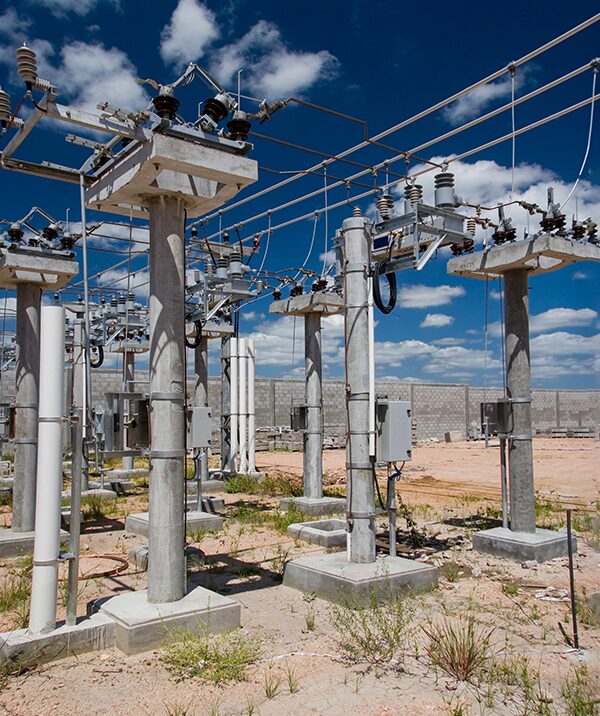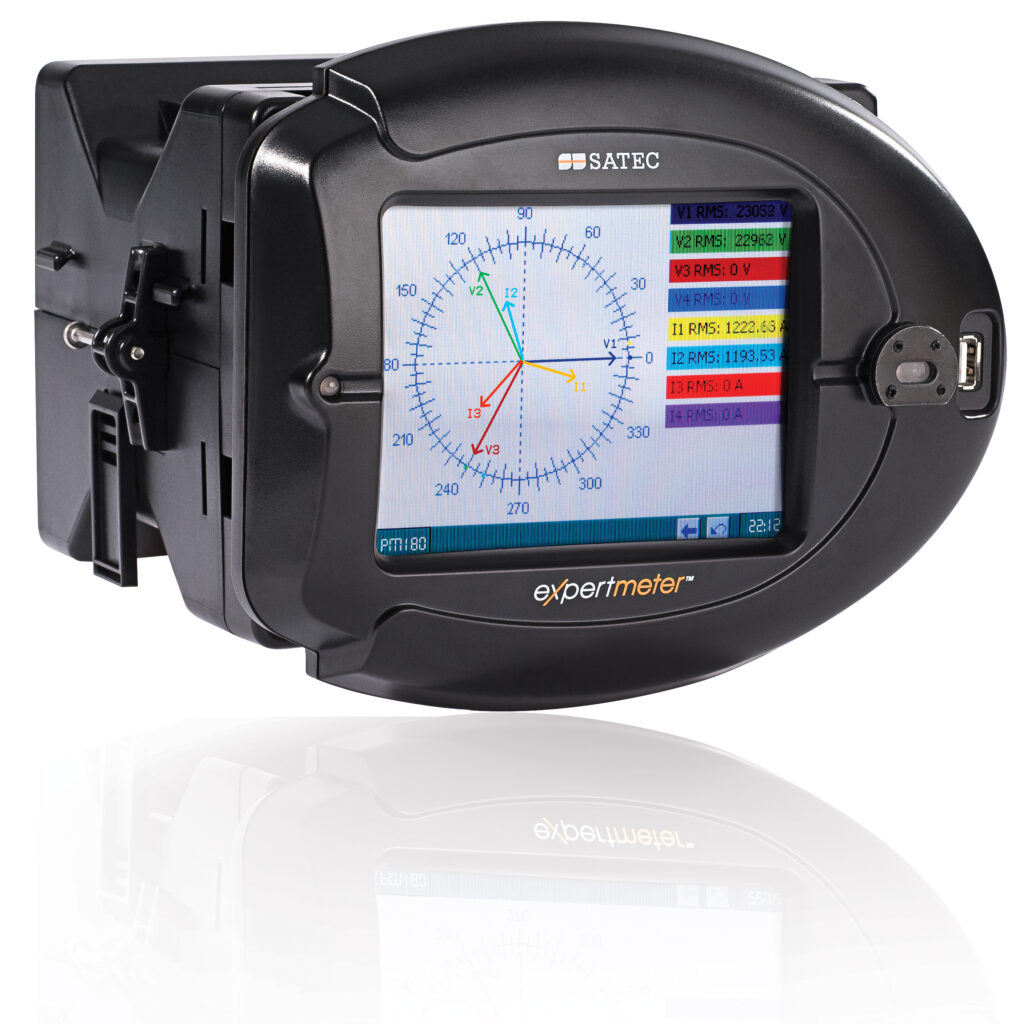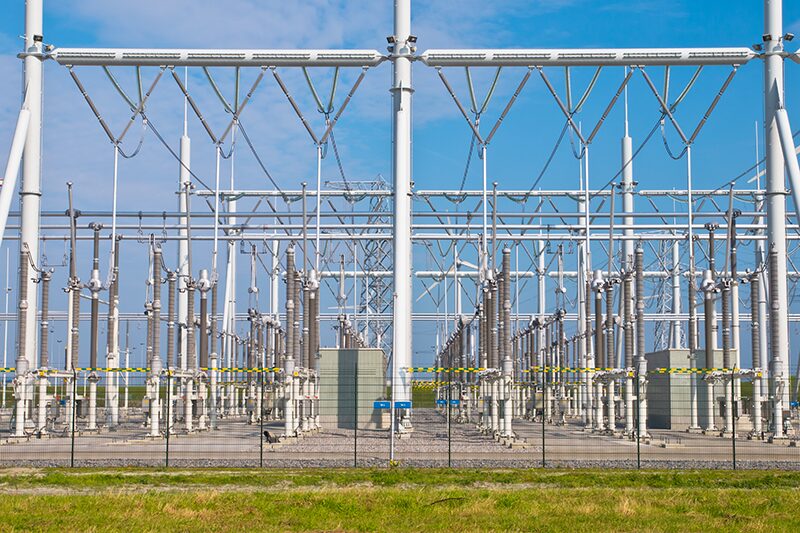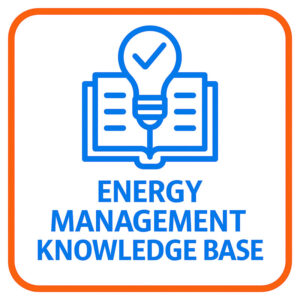With the ongoing transformation of electrical grids worldwide, especially with the increasing integration of renewable energy sources, advanced automation and monitoring solutions within substations are more important than ever.
Bay Controllers, also known as Bay Control Units, play a pivotal role in enhancing substation operations by enabling fault isolation and seamlessly integrating multiple components.
Take a look at why Bay Controllers are important, the different types available, and how they are monitored and connected to other systems.
What are Bay Controllers?
Bay Controllers are vital in substation automation. They act to manage and control the operation of electrical switchgear, providing the interface between the high-voltage equipment and control centres.
Here are the key benefits bay controllers bring to substations:
- Grid Stability and Reliability: Bay Controllers ensure the smooth operation of equipment such as circuit breakers and switches, thus maintaining grid stability. Their ability to monitor, control, and automate switching processes minimises outages and ensures reliable power delivery.
- Real-Time Fault Detection: By monitoring critical equipment and operations, a Bay Controller can detect faults in real-time, allowing for the immediate isolation of faults and preventing widespread power failures.
- Operational Efficiency: By automating various switching and control processes, Bay Controllers reduce the need for manual interventions. Their ability to interface with Intelligent Electronic Devices (IEDs) helps streamline protection and control functions.
- Data Aggregation for Control Centres: Bay Controllers collect and communicate data from substation equipment to SCADA (Supervisory Control and Data Acquisition) systems, enabling operators to make informed decisions.
- Interfacing with Renewable Energy Sources: The rise of renewable energy sources such as wind, solar, and battery storage requires effective grid management. Bay Controllers ensure smooth integration and facilitate real-time monitoring and control of these resources.

Different Types of Bay Controllers
Bay Controllers can be classified based on their functions within substations:
Protection Bay Controllers:
Function: These units handle the protection and isolation of equipment, particularly during fault conditions. Protection Bay Controllers ensure that fault conditions are detected, and protective actions such as breaker trips are initiated swiftly.
Example: The Protection Bay Controller integrated with PM180 is capable of detecting faults and monitoring switch positions, aiding in the quick isolation of faults.
Control Bay Controllers:
Function: These Bay Controllers manage switching operations and control substation equipment such as circuit breakers, isolators and disconnectors. They can automate or provide manual control over these components, ensuring safe and efficient operations.
Example: SATEC’s PM180 has switching control features that allow operators to configure switching devices and control commands either remotely via IEC 61850 and Modbus or locally through setpoint control logic.
Monitoring Bay Controllers:
Function: These Bay Controllers are used primarily for the continuous monitoring of substation equipment and power quality parameters. They gather data on voltage levels, current, power quality, and more.
Example: The PM180 Bay Controller excels in power quality monitoring with full compliance to IEC 61000-4-30 Class A standards for power quality measurement.
Measurement and Synchrophasor Controllers:
Function: These control units provide real-time measurements of voltage, current and frequency across the grid. When integrated with Phasor Measurement Units (PMUs), they ensure time-synchronised data essential for grid stability and protection.
Example: The PM180 supports IEEE C37.118.1 for synchrophasor measurement, providing a reliable platform for grid monitoring.
Monitoring and Connecting Bay Controllers
Bay Controllers are monitored and managed through various advanced systems, ensuring efficient and reliable operation. Here are some popular examples:
- SCADA Systems: Bay Controllers are integral to SCADA systems, which monitor real-time operations across substations. The PM180 supports SCADA integration via Modbus, DNP3, and IEC 61850 protocols.
- Energy Management Systems (EMS): For larger grids, Bay Controllers interface with EMS platforms to manage the overall energy flow, optimise resources, and maintain grid balance.
- Condition-Based Monitoring Systems: These systems predict failures and ensure preventive maintenance. With its fault detection and diagnostic capabilities, the PM180 enables condition-based monitoring of substation equipment.

IEC 61850 and GOOSE Messaging in Bay Controllers
One of the most important protocols in modern substations is IEC 61850, which supports seamless communication between devices. GOOSE messaging (Generic Object-Oriented Substation Event) allows real-time data exchange with low latency, making it ideal for critical operations such as protection and interlocking.
SATEC’s PM180 is compliant with IEC 61850 and applies interlocking logic.
- PM180 Compliance with IEC 61850: The PM180 implements IEC 61850 Edition 2, making it compliant with standards for substation automation. It uses GOOSE messaging for interlocking logic, remote control of switches and communication between multiple devices. Its high-speed GOOSE messages ensure rapid response times, critical for substation operations.
- Interlocking Logic: This feature is essential for preventing dangerous operations like simultaneous closing of switches or breakers. The PM180 supports interlocking logic that can be configured through setpoint control logic, ensuring that operations follow predefined safety protocols.
Bay Controller for Substation Automation: PM180 Technical Compliance and Standards
The SATEC PM180 is designed to meet multiple international standards for power quality, control and communication in electrical substations. Its compliance with these standards guarantees its performance in a wide range of applications, from monitoring to control and fault detection.
Bay Controller Power Quality Compliance
- The PM180 complies with IEC 61000-4-30 Class A, which sets the highest standard for power quality measurement. This ensures accurate measurements of voltage, current, harmonics, and other parameters.
- It supports flicker measurements as per IEC 61000-4-15 and harmonics measurement in line with IEC 61000-4-7.
Bay Controller Measurement Accuracy
- The PM180 offers Class 0.2S accuracy for revenue-grade energy metering in compliance with IEC 62053-22 and ANSI C12.20 standards. This high level of accuracy makes it suitable for critical metering and billing applications.
Communication Standards
- IEC 61850: The PM180 supports Edition 2 of IEC 61850, which includes GOOSE messaging and MMS for seamless communication between substation devices.
- Modbus and DNP3: The PM180 is also compatible with widely used Modbus RTU/TCP and DNP3 protocols, providing flexible integration options for existing infrastructure.
- Time Synchronisation: The PM180 uses IRIG-B and IEEE 1588 PTPv2 for accurate time synchronisation, crucial for phasor measurement and fault analysis.
Fault Recording and Analysis
- The PM180’s Digital Fault Recorder (DFR) function supports programmable fault thresholds, automatic logging of fault events, and pre/post-fault waveform recording. It is capable of recording faults with up to 200A RMS and provides detailed fault reports, including distance to fault calculation.
Need a Bay Controller for your substation?
Bay Controllers are essential for the efficient and reliable operation of modern substations. By leveraging IEC 61850 GOOSE messaging, SATEC’s PM180 enables the high-speed, secure communication necessary for real-time protection and control functions.
The PM180’s compliance with international standards such as IEC 61000-4-30 Class A for power quality, IEC 62053-22 for energy metering accuracy, and IEEE C37.118.1 for synchrophasor measurement ensures that it can meet the most stringent requirements for electrical infrastructure.

With its advanced capabilities in fault detection, power quality monitoring, and seamless integration into substation automation systems, the PM180 stands out as a robust solution for utility operators and grid managers, especially as the transition to renewable energy continues.
SATEC is the trusted name in energy management solutions. Contact our team for more information about Bay Controllers and other energy management products.



